People awed, honored by 'The Embrace' as MLK tribute sculpture unveiled in Boston
- Oops!Something went wrong.Please try again later.
- Oops!Something went wrong.Please try again later.
- Oops!Something went wrong.Please try again later.
BOSTON — It was a moment of profound joy for many of the people attending the unveiling Friday of "The Embrace," the city’s sculpture and tribute to Rev. Martin Luther King Jr., and his wife, Coretta Scott King, located in the newly dedicated 1965 Freedom Plaza on Boston Common.
Nadine Jones, the daughter of Boston’s first Black deputy mayor, Clarence “Jeep” Jones Jr., found her father’s name — one of 69 — memorialized in bronze and embedded in a stylized labyrinth surrounding the massive bronze statue created by New York sculptor Hank Willis Thomas.
Active in the community and dedicated to serving the youth of Roxbury, Jones was appreciated and respected by Boston's then-mayor, Kevin White, who noticed Jones' activism and brought him on as deputy mayor.
“He did that and continued to work with the city for the rest of his life,” Nadine Jones said of her late father, who died in 2020. He served on the Boston Redevelopment Board for 32 years, including 24 as its chairman.
Jones was 86 when he died on Feb. 21, 2020, fittingly, she said, during Black History Month.
Finding his name was her moment of joy.
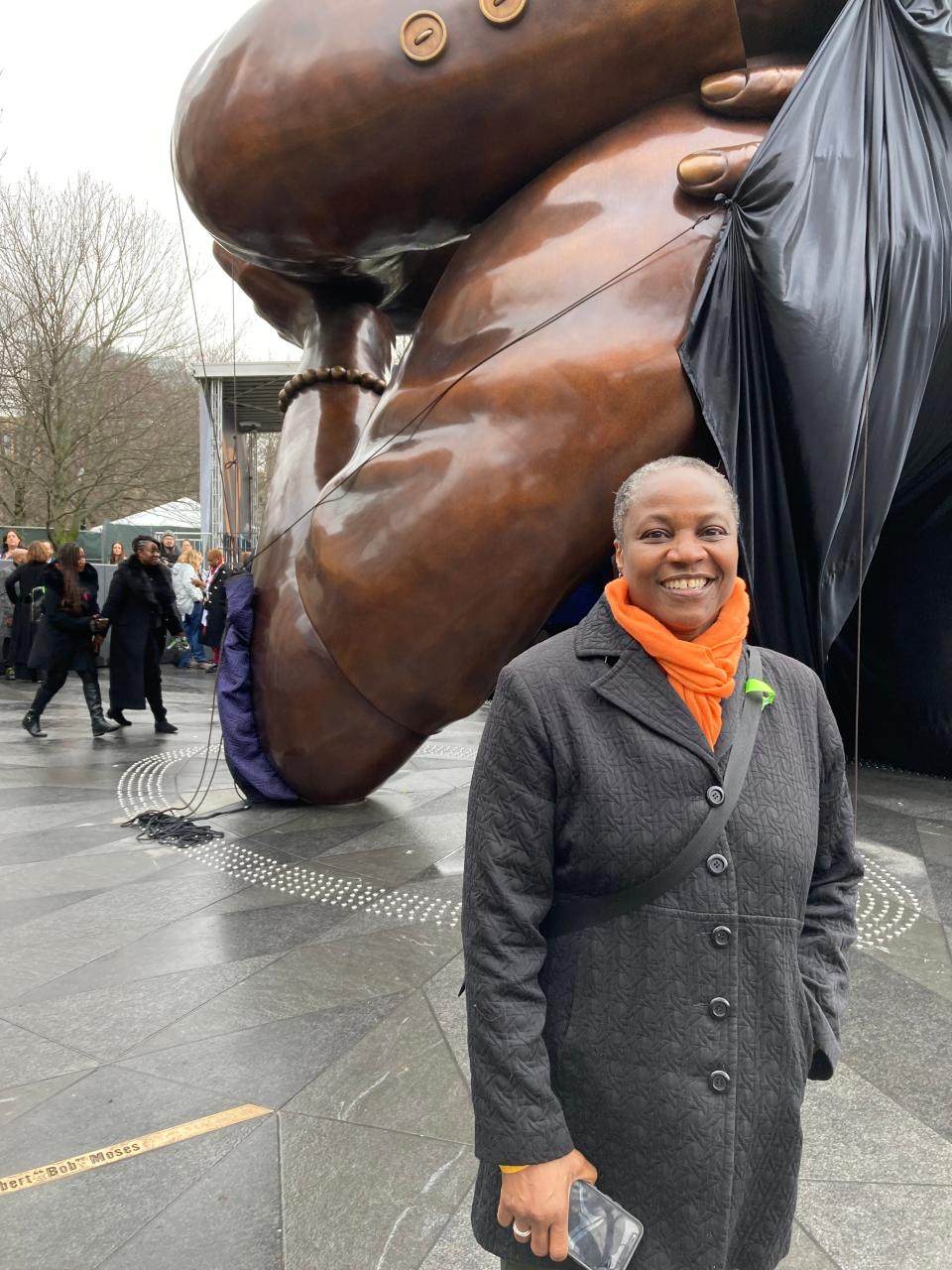
For Lakeisha Harewood, a first-generation American, Boston-born and -bred, the unveiling of the 37,000-pound sculpture was “beautiful.”
“To have this in my city is a true testament of (to the meaning of) 'love as a verb,' ” said Harewood, who wears the phrase on her shirt as a point of pride. “This is a testament of love and its endless possibilities.”
Crowds witness sculpture's unveiling
In addition to the hundreds of dignitaries attending the unveiling, hundreds more people gathered on the other side of the fencing surrounding the plaza.
There were schoolchildren, noticed by Boston Mayor Michelle Wu as she spoke from the stage, as well as regular folks just hoping for a glimpse of the statue and to feel part of the celebration.
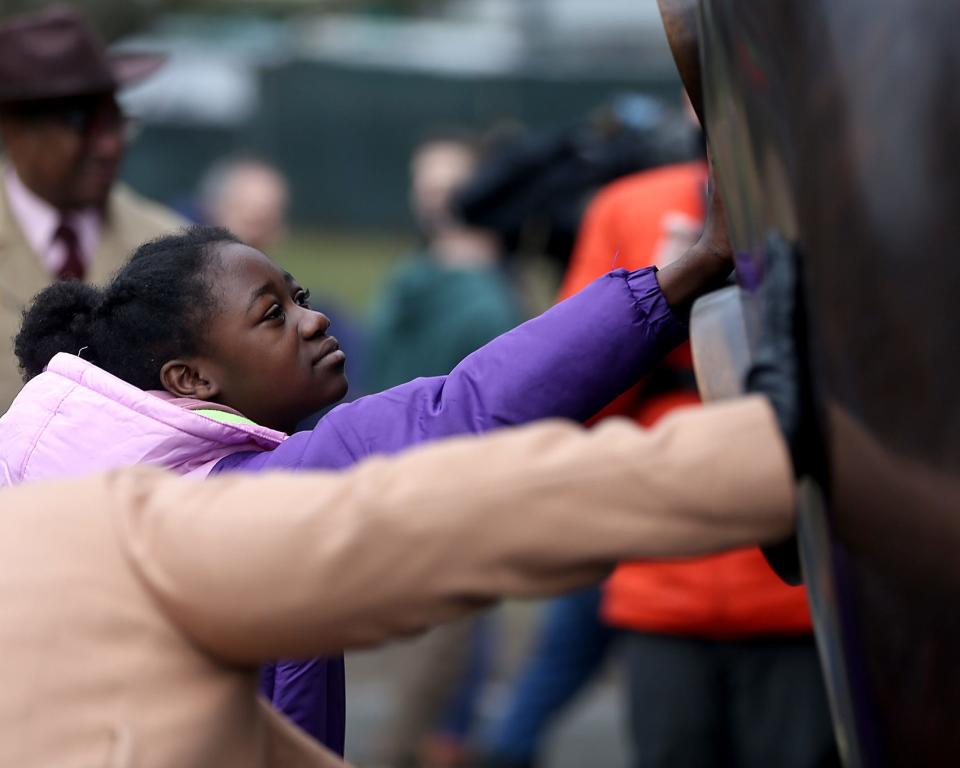
Shyairah Smith Clark O'Neal, 11, skipped school with her stepfather, Donelle O’Neal, to attend the unveiling.
O’Neal said it was important to attend Friday's unveiling and to bring along his Shyairah, because the family belongs to the 12th Baptist Church, where King was an assistant minister while studying in Boston decades ago.
“He taught us leadership; how to be leaders in our community,” O’Neal said. “It’s beautiful to see all the Black elected leaders; I wanted Shyairah to see and understand the importance of 'The Embrace.' ”
Brooke-Lynn Spencer-Holder, 6, had a shorter day in first grade because her father, Micah Holder, wanted her to experience the event he called "historic."
“This is huge for Massachusetts,” Holder said.
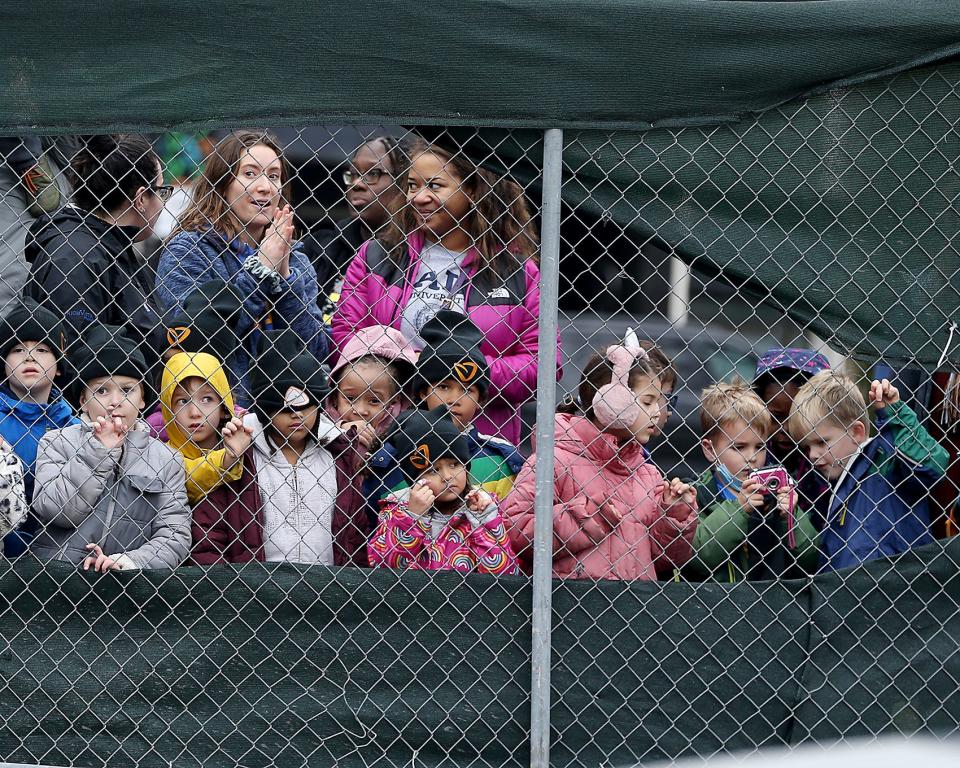
On the other side of the fence was Dr. Tita Gray, of California, with her cousin, Lisa Terry. Gray was in Boston for her mother’s memorial service, but said it was fitting they attend the ceremony, despite having family obligations elsewhere.
“We need to show support, show solidarity and celebrate Dr. Martin Luther King Jr. and his legacy,” Gray said. “It makes me feel good about being a Bostonian.”
Modeled after photograph
Wu called the sculpture — modeled after a 1964 photograph taken of the King couple embracing after he learned he had won the Nobel Peace Prize — a tribute to the philosophy of love, compassion and a testament to the fight for equality.
Embrace Boston, a nonprofit formed in 2017, steered the design and construction of the $9 million sculpture that measures 22 feet tall by 40 feet wide, and that was executed in bronze from its casting in a Walla Walla, Washington, foundry, to its arrival, assembly and erection in Boston.
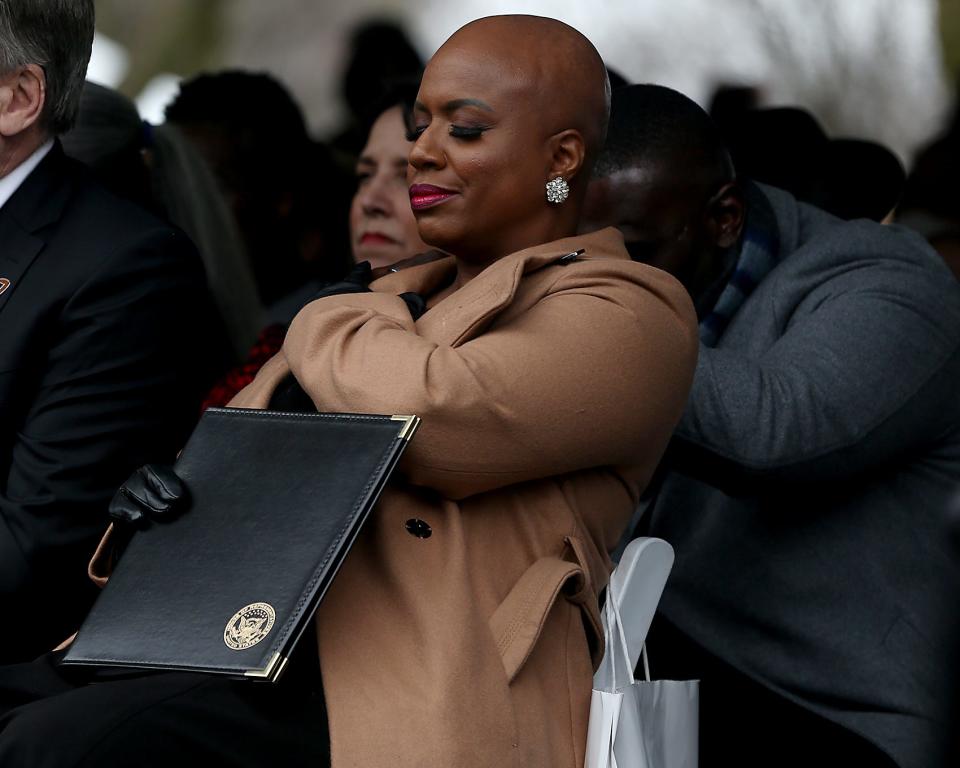
The nonprofit has an overarching, long-term mission: "To dismantle structural racism through the intersection of art, culture, community and research and policy decisions. To build a 'New Boston,' according to its website, "a city that is racially inclusive, equitable, welcoming, antiracist and where all belong."
In her remarks, Wu said the sculpture is not just a symbol of love and unity but also a tribute to Coretta Scott King, whose solace and strength for the man who would become the face of the movement for civil rights. Wu welcomed to Martin Luther King III, his wife, Andrea, and their daughter, Yolanda Renee King, 14.
“I am honored to participate in the unveiling of the memorial that signifies the bond of love shared by my parents,” King said, who added that he “owes his very existence to Boston” as the place where his parents found each other and fell in love.
“Both of them loved the city,” he said, recognizing it as a hotbed of the abolitionist movement and progressive thought, naming abolitionists, heroes of the civil rights movement, and antiracists and antifascists: W.E.B. DuBois and Howard Zinn.”
In her speech, Andrea King said she was dazzled by the power represented by the sculpted hands. She appreciated their ability to clasp and to hold even as they symbolize the hopes and dreams of the young couple and their mutual determination to overcome racism, to survive and thrive.
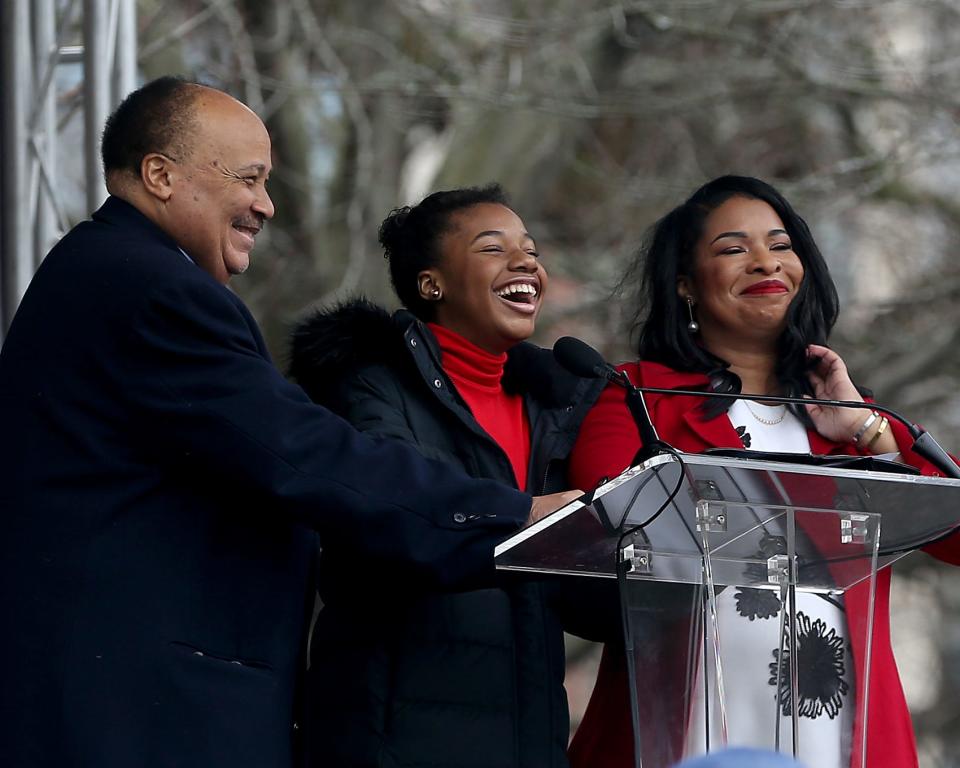
She praised Coretta Scott King for her determination to continue to build the movement, even after the assassination of her husband, to stand up and demand his vision be recognized and appreciated. Her determination that the country honor him with a national day of service.
“A Black woman demanded this: Let the magic of little Black girls not be ignored, the power of Black women not be denied,” Andrea King said.
Yolanda Renee King said she sees the love and strength of her grandparents, whom she never met, in the sculpture.
“It symbolizes the unity that changed the world,” she said.
'A call to action'
Other speakers called "The Embrace" a call to action, to stand up for justice and a step toward building a Boston that is open, welcoming and equitable.
“The legacy of Martin Luther King Jr., for me is not just a path to righteousness and the fight against injustice, but to be seen and recognized,” said Gov. Maura Healey. “It’s the respecting and uplifting the dignity and worth of every single human being in our midst.”
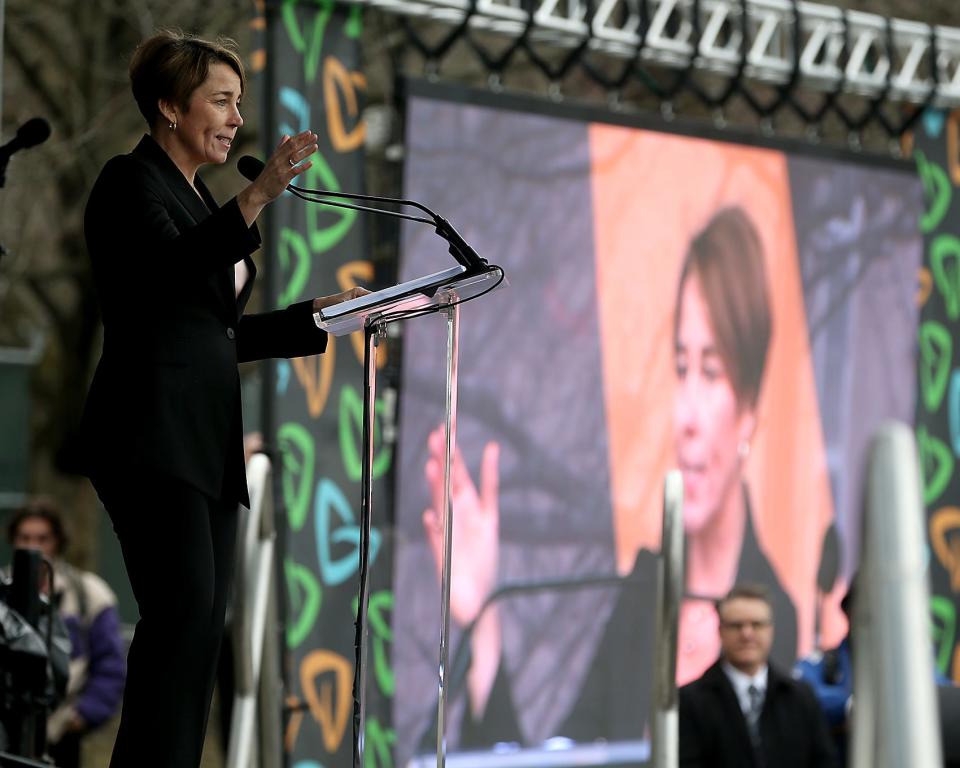
Former governor Deval Patrick noted Boston may be slow to open its arms to newcomers, but once it does, “our embrace is firm, warm and lasting.”
The ties between King, his wife and Boston date back almost 70 years.
Long before the Montgomery bus boycott, the rallies and nonviolent protests, long before the March on Washington and the Nobel Prize, King was a graduate student in Boston, pursuing a doctoral degree.
True, he was not a typical freshman, looking for fun and frolic. As an older student attending Boston University, working part time as a preacher and also attending lectures at Harvard Divinity School, King was focused.
Boston where Kings met
However, he had time for romance.
It was in Boston where King met Coretta Scott.
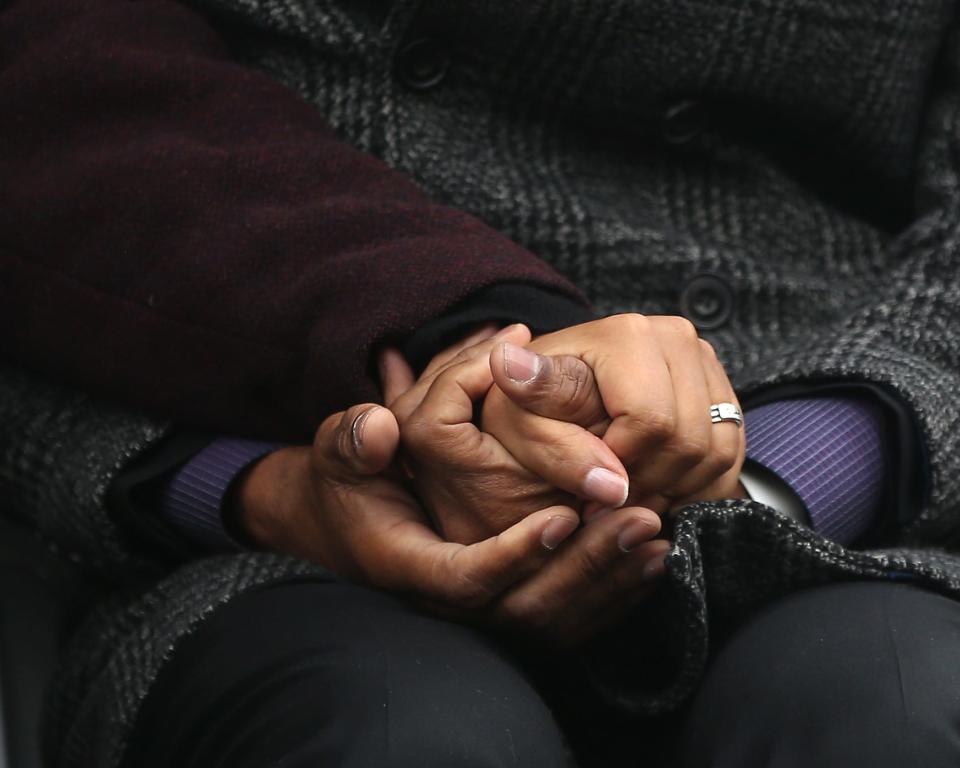
King arrived in Boston in 1951, after leaving the Crozer Theological Seminary outside of Philadelphia. Scott was a transfer student from Alabama, via Antioch College in Ohio.
They met in 1952, dated and married in 1953. Scott graduated as a married woman, a preacher’s wife. And by the time King earned his doctoral degree in 1955, their first child was on the way.
King’s ties to Boston didn’t end with his graduation. While he is said to have returned to the city on several occasions - to donate his papers, to accept honorary degrees, to fundraise - his most historic return to Boston occurred in April 1965 when he led the Freedom Rally, one of five speakers promoted as attending the rally.
The day, April 23, was declared Martin Luther King Day by then-governor John A. Volpe, and sponsored by a host of politicians, including U.S. Sen. Edward M. Kennedy.
The march from Roxbury to Boston Common attracted more than 20,000 people.
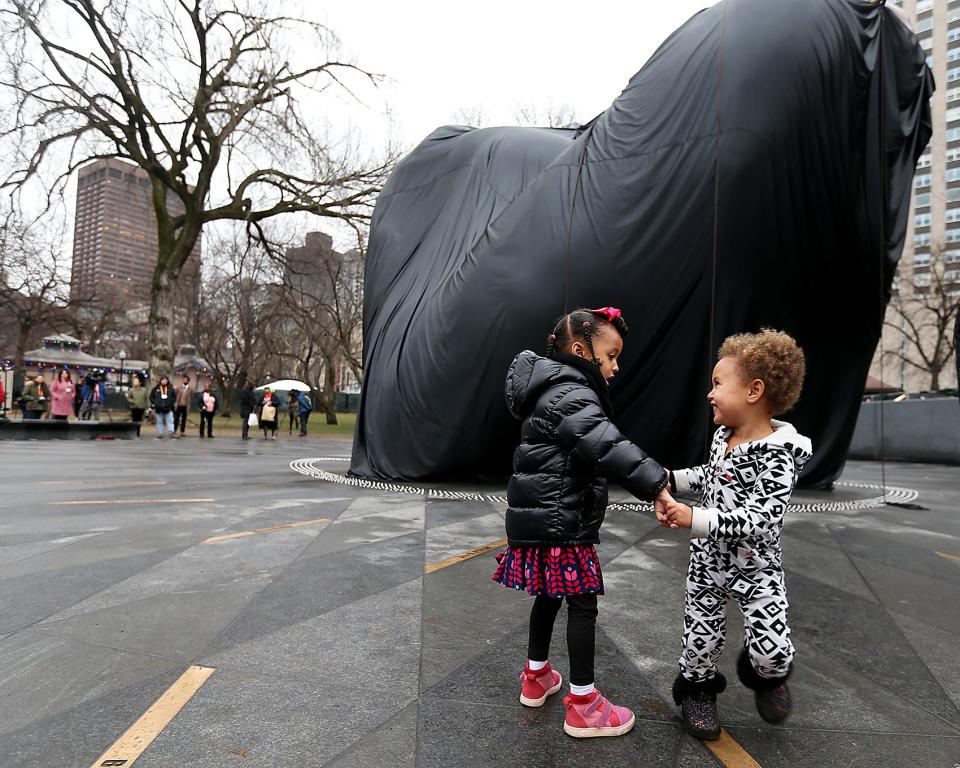
Its purpose, according to the program notes, included in "The Embrace" project submission by Thomas and the MASS Design Group, was multipronged. It served to protest exclusion of the poor from antipoverty planning, to protest the bad faith of public officials who failed to enforce housing codes and to protest segregation in public housing.
The aim was to protest the “lie that a New Boston can be built without social justice.”
At the time, King was quoted as saying: “Little did I imagine that such a day was possible when I walked through this same Boston Common as a student 10 years ago. This will go down as one of the greatest days that Boston has ever seen.”
This article originally appeared on Telegram & Gazette: On Boston Common: 'The Embrace' honors Rev. Martin Luther King Jr.

